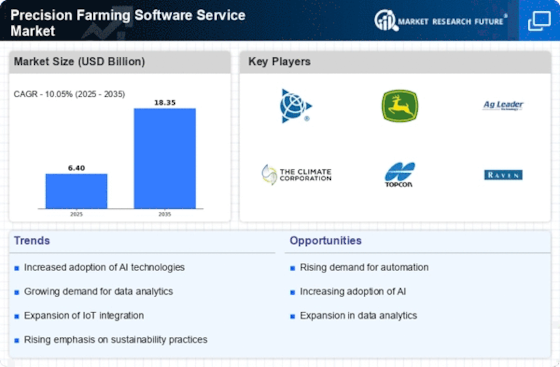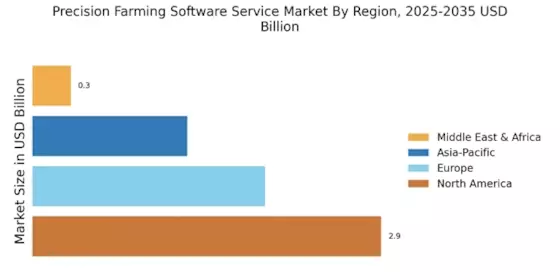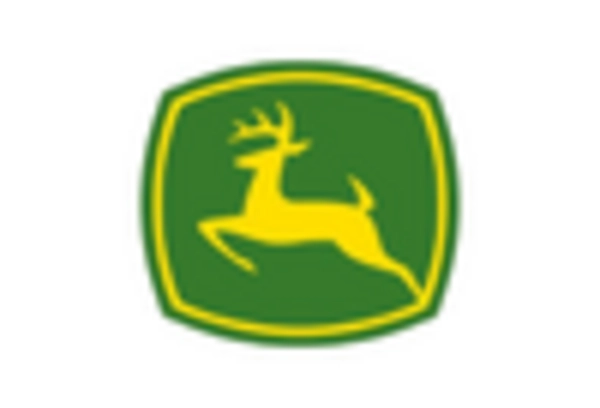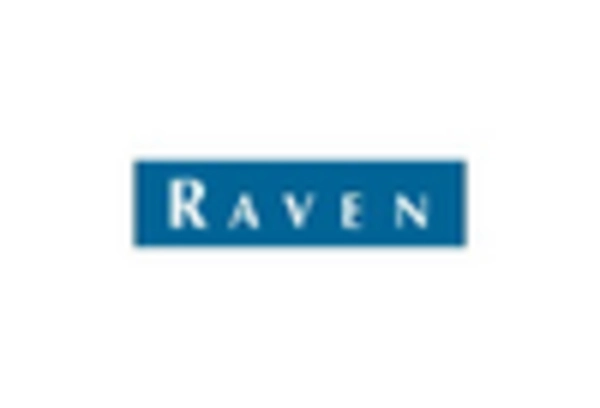Government Initiatives and Support
Government initiatives aimed at promoting sustainable agricultural practices are significantly influencing the Precision Farming Software Service Market. Various countries are implementing policies that encourage the adoption of precision farming technologies. For example, subsidies and grants for farmers investing in advanced agricultural technologies are becoming more common. These initiatives not only support farmers financially but also emphasize the importance of sustainable practices in agriculture. The increasing recognition of the environmental benefits associated with precision farming is likely to drive further investment in software services that support these practices. As governments continue to advocate for sustainable agriculture, the Precision Farming Software Service Market is expected to benefit from enhanced support and funding.
Increasing Demand for Food Security
The Precision Farming Software Service Market is experiencing a surge in demand driven by the need for enhanced food security. As the global population continues to grow, the pressure on agricultural systems intensifies. Farmers are increasingly adopting precision farming techniques to optimize crop yields and resource utilization. This trend is reflected in the projected growth of the precision agriculture market, which is expected to reach USD 12 billion by 2027. The integration of software services that provide real-time data analytics and decision-making tools is crucial for farmers aiming to meet the rising food demand while minimizing environmental impact. Consequently, the emphasis on food security is a significant driver for the Precision Farming Software Service Market.
Adoption of Data-Driven Decision Making
The adoption of data-driven decision-making in agriculture is transforming the Precision Farming Software Service Market. Farmers are increasingly utilizing data analytics to make informed choices regarding crop management, pest control, and resource allocation. The ability to analyze historical and real-time data allows for more precise interventions, leading to improved crop performance. The market for agricultural data analytics is projected to grow significantly, with estimates suggesting a value of USD 5 billion by 2026. This shift towards data-centric approaches is encouraging the development of sophisticated software services that cater to the needs of modern farmers. As data-driven practices become more prevalent, the Precision Farming Software Service Market is poised for substantial growth.
Rising Awareness of Sustainable Practices
The growing awareness of sustainable agricultural practices is a key driver for the Precision Farming Software Service Market. Farmers are increasingly recognizing the importance of reducing their environmental footprint while maintaining productivity. Precision farming software services provide tools that help in optimizing resource use, such as water and fertilizers, thereby promoting sustainability. The market is witnessing a shift towards solutions that not only enhance yield but also contribute to environmental conservation. This trend is supported by research indicating that precision agriculture can reduce input costs by up to 20%, making it an attractive option for farmers. As sustainability becomes a priority, the demand for precision farming software services is likely to rise.
Technological Advancements in Agriculture
Technological advancements play a pivotal role in shaping the Precision Farming Software Service Market. Innovations such as artificial intelligence, machine learning, and IoT are revolutionizing agricultural practices. These technologies enable farmers to collect and analyze vast amounts of data, leading to more informed decision-making. For instance, the use of drones and satellite imagery allows for precise monitoring of crop health and soil conditions. The market for precision agriculture technology is projected to grow at a CAGR of 12% from 2023 to 2030, indicating a robust interest in software services that facilitate these advancements. As farmers increasingly rely on technology to enhance productivity, the demand for precision farming software services is likely to escalate.


















Leave a Comment